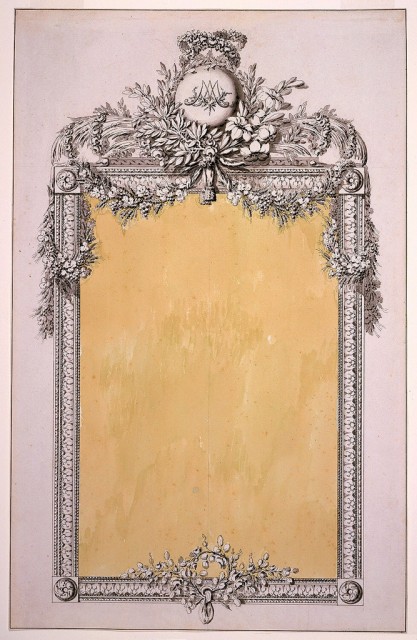Above all flowers, Queen Marie Antoinette prized roses. She was often painted with roses in hand or displayed in her hair. Certain portraits—as well as this mirror design from 1781–90—featured rose garlands as decorative motifs. Though roses were her favorite, all flowers were of great importance to the Queen, both wild and cultivated. She had splendid gardens from which she could pick flowers, her own perfumer who crafted bespoke scents with the Queen’s most-loved flowers in mind, and vases, filled to the brim with blossoms, placed throughout the royal palaces. The Queen’s Hamlet (le Hameau de La Reine) at Versailles, where she would play at the bucolic life, even included a small-scale dairy—a further example of her interest in nature. The Queen was also an active patron of decorative arts and possessed a keen interest in interior decoration. Her passion for flora, and her prolific commissioning of objects, led to the prominent inclusion of flowers and natural motifs in late eighteenth-century French design.
Several objects commissioned by Marie Antoinette still exist and many of them display her monogram, which was most commonly composed of blossoms and leaves. Though it is not known if the mirror frame in this design was ever made, it serves as a perfect example of a neoclassical French object that may have been commissioned by the Queen herself. Here, the design uses multiple floral motifs, including roses in the small wreaths crowning a sphere containing the intertwined initials, “MA.” Though the mirror frame is angular with sharply classical molding, it is softened by the inclusion of flowers and botanical garlands. Across the top of the frame, sheaths of wheat wrap around bunches of grapes that drape from the corners. Between the monogrammed sphere and the garlands are olive branches and bunches of lilies. At the very base, a gentle grouping of leaves offers balance. The mirror frame appears to be in full blossom—bountiful as well as decorative.
